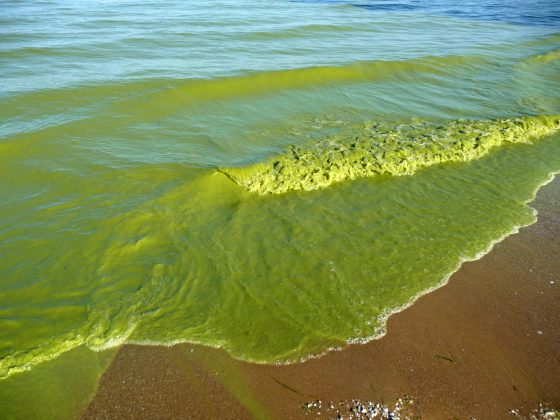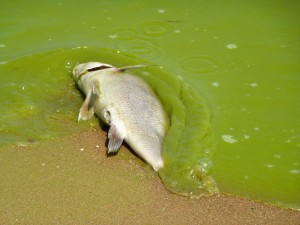
It’s March, and Great Lakes observers have a close eye on the rain gauge and farmland. Laura Johnson, Director of the National Center for Water Quality Research at Heidelberg University in Ohio, says the period from now until the end of July will determine how severe the algal bloom will be on Lake Erie this summer.
Record-setting algal blooms on Lake Erie and 2011 and 2015 both occurred after periods of intense spring precipitation and snow melt on lands bordering western Lake Erie and its tributaries. Johnson says while total phosphorus levels entering Lake Erie doesn’t change much on an annual basis, heavy spring rain can spike the level of dissolved phosphorus into a compressed time frame – setting the stage for a large summer bloom.
That’s what happened in 2015, and while the bloom was record-breaking, it was not as large as spring phosphorus discharges would have predicted. Johnson told an audience at Michigan State University that the bloom may ultimately have been
limited by a couple of factors. First, the heavy rain created muddy conditions that may have limited the amount of sunlight reaching the algae. Alternatively, she suggested that nitrogen – which was also discharged in large quantities – could have acted as a limiter. Nitrogen, she explained, doesn’t promote algae blooms, but it does affect how toxic the algae will be.
Speaking at Michigan State University’s Agriculture and Natural Resources Week, Johnson called dissolved phosphorus the “sugar” of the algae world. She said that some land management practices instituted in the past to help clean up Lake Erie – such as no-till agricultural practices to reduce erosion and sediments – may need review. Studies have found that the top one inch of soil on no-till fields may have up to 40% more phosphorus than the next seven inches of soil, and that working that phosphorus into the top two inches of dirt could reduce dissolved phosphorus run-off by 28%. She suggested farmers might want to resume the use of moldboard plows to help mix fertilizer more deeply into the soil.
She also noted that many farms in northwest Ohio have added a third crop – winter wheat – to the usual two-crop rotation of corn and soybeans. While it serves as a cover crop, she called wheat a “phosphorus hungry” crop.
Finally, she expressed the hope that Ohio’s “Four R” program – the right amount of fertilizer, in the right place, at the right time, and from the right source – could help reduce future algae blooms if farmers follow the recommendations.






